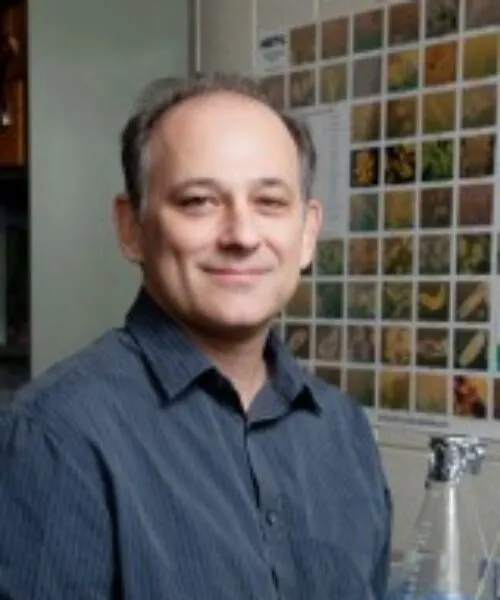About Daniel Schneider
Biography
Dr. Schneider is an ecologist and environmental historian whose research focuses on the interrelations between natural and human systems in planning and management. His book, Hybrid Nature: Sewage Treatment and the Contradictions of the Industrial Ecosystem (MIT Press, 2011) is an environmental history of the sewage treatment plant that explores how industrial ecosystems are conceived and managed. It received the 2013 George Perkins Marsh Prize from the American Society for Environmental History. He has also written on the history of floodplain drainage on the Illinois River, the ecology of invasive species, and the history of ecology. Dr. Schneider has also worked on aquatic ecology and water resources issues in Costa Rica, Nicaragua, Spain, and Mexico.
Dr. Schneider is also faculty administrator for Bachelor of Science in Sustainable Design program in the College of Fine and Applied Arts. In his spare time, he builds mid-century, modern-inspired furniture (Daniel Schneider Furniture).
Education
- PhD (Zoology; minor subject, Entomology), University of Wisconsin-Madison, Madison, Wisconsin, 1990
- MS (Zoology), University of Wisconsin-Madison, Madison, Wisconsin, 1986
- BA (Environmental Science), Wesleyan University, Middletown, Connecticut, 1981
Research and publications
Ongoing and upcoming research
Ongoing and Upcoming Research
Dr. Schneider is currently working on an interdisciplinary project on the ecology and management of bed bugs in U.S. cities. This study focuses on the social justice implications of bed bug infestations, and how they are mediated through housing policies and landlord-tenant relations.
Selected publications
Daniel Schneider, Hybrid Nature: Sewage Treatment and the Contradictions of the Industrial Ecosystem (Cambridge: The MIT Press, 2011) 338 pp. Winner of 2013 George Perkins Marsh Prize, ASEH.
McLafferty, S, D. Schneider, K Abelt. 2020. Placing volunteered geographic health information: Socio-spatial bias in 311 bed bug report data for New York City. Health and Place. Accepted.
Schneider, D. 2019. They’re back. Municipal responses to the resurgence of bed bug infestations. Journal of the American Planning Association. 85(2):96-113.
Honey-Rosés, J., N. Brozovic, and D.W. Schneider. 2014. Changing ecosystem service values following technological change. Environmental Management. 53(6):1146-1157 .
Schneider, D. 2014. Who invented activated sludge? Environmental Engineer and Scientist 50:8-11.
Teaching and advising
Classes taught
- UP 205: Ecology and Environmental Sustainability
- UP 405: Watershed Ecology and Planning
- UP 406: Urban Ecology
- UP 456: Sustainable Planning Workshop
- FAA 230: Sustainable Design of the Built Environment
Students advised
Vinisha Singh Basnet, PhD in Regional Planning. In progress.
Shruti Syal, PhD in Regional Planning, 2019. Dissertation: A Socio-Ecological Systems Perspective on Planning for Informality. Currently Assistant Professor, Wilder School of Government and Public Affairs, Virginia Commonwealth University, Richmond, VA
Jordi Honey-Rosés, PhD in Regional Planning, 2012. Dissertation: “Ecosystem services in planning practice for urban and technologically advanced landscapes.” Currently Associate Professor, School of Community and Regional Planning, University of British Columbia
Glenn Sandiford, PhD in Regional Planning, 2009. Dissertation: “Transforming an exotic species: 19th century narratives of carp introduction in the United States”
Lisa Henne, PhD in Regional Planning, 2002. Dissertation: “Power and science in participatory watershed planning: a case study from rural Mexico.” Currently practicing in water resources law, New Mexico
Masters in Urban Planning (MUP) Students
Regina Cassidy, MUP 2021, Watershed Plan for Salt Creek, Cumberland & Effingham Counties
Karin Hodgin Jones, MUP 2016, “Electronics Recycling: Estimating E-scrap in Illinois Counties for Improved Collection Strategies for the State”
Dominique Gilbert, MUP 2016, “Recycling Wood from the Urban Forest”
Holly Nelson, MUP 2012, “Central High School Relocation Study”
